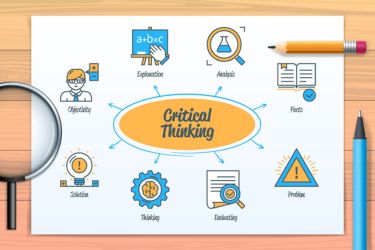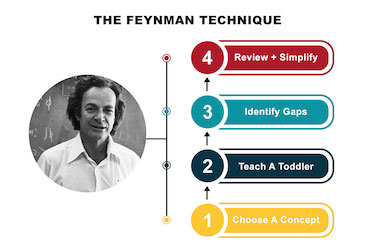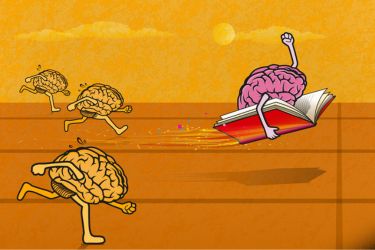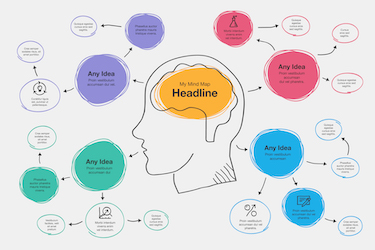As technology advances, we are witnessing a significant shift in the way we approach education. AI and machine learning offer personalised learning experiences that adapt to the needs of each student, enhancing their educational journey. This transformation is not just about better learning tools; it reshapes the entire educational landscape, making learning more inclusive and accessible for everyone.

Our classrooms are evolving with AI-driven solutions that improve engagement and outcomes. From virtual tutors to intelligent systems that analyse learning behaviours, we can leverage these technologies to better support teachers and students alike. As we explore how AI is changing education, we recognise that these innovations are paving the way for a more tailored and effective learning environment.
The future of education lies in our ability to integrate these technologies thoughtfully. By addressing data privacy and ethical considerations, we can ensure that AI enhances rather than hinders our learning experiences.
Key Takeaways
- AI technologies are personalising student learning experiences.
- Innovative teaching methods are reshaping how educators approach lessons.
- Future integration of AI must consider ethical and privacy concerns.
The Role of AI in Shaping Educational Paradigms

AI is changing how we view education by enhancing the learning experience, facilitating personalised learning, and promoting equitable access. This technology allows us to tailor education to meet diverse needs, ensuring that all learners can thrive.
Transforming the Learning Experience
AI improves the learning experience by making it more interactive and engaging. With tools like virtual tutors and intelligent learning platforms, we can now create immersive environments where students can learn at their own pace. These platforms analyse student progress and adapt the content to match their needs, making lessons more relevant and effective.
For example, chatbots are available to provide immediate feedback on assignments. This instant support helps students clarify doubts and enhances their understanding. Furthermore, using AI for data analysis allows us to identify areas where students struggle, leading to timely interventions.
Facilitating Personalised Learning Pathways
Personalised learning pathways are essential for addressing different learning styles and abilities. AI systems can assess an individual learner's strengths and weaknesses. This data-driven approach helps us develop tailored educational experiences that suit each student's unique needs.
For instance, programmes that harness machine learning can recommend specific resources and assignments based on student performance. These recommendations ensure that learners engage with material that challenges them appropriately, fostering growth and retention. Such strategies encourage autonomy, helping students take charge of their education.
Promoting Equitable Access to Education
AI plays a crucial role in promoting equitable access to education. It can help bridge gaps for students from diverse backgrounds or underfunded institutions. With AI-driven tools, we can provide quality resources to all learners, regardless of their circumstances.
For example, online platforms equipped with AI can offer free or low-cost educational materials to students lacking access to advanced resources. By fostering inclusive learning environments, we give every student the opportunity to succeed. Moreover, AI can identify trends in educational inequity, allowing educators to address these issues proactively.
Through these advances, we are reshaping the educational landscape to be more inclusive, accessible, and focused on student success.
Technological Advancements in AI and Machine Learning

Recent developments in AI and machine learning are reshaping education in significant ways. From powerful algorithms driving personalised learning to chatbots enhancing student interaction, these advancements bring numerous benefits. We will explore their impact on education through key areas.
Machine Learning Algorithms at Work
Machine learning algorithms analyse vast data sets to tailor educational experiences. By evaluating student performance, these algorithms help identify strengths and weaknesses.
For instance, adaptive learning platforms adjust the curriculum based on each student’s pace. This creates a more effective learning environment.
Key benefits include:
- Personalisation: Customising lessons for individual needs.
- Efficiency: Reducing time spent on areas where students excel while focusing on challenging topics.
- Feedback: Providing immediate responses to students, enhancing their learning journey.
As we implement these algorithms, we can see improved engagement and understanding among learners.
The Emergence of Educational Chatbots
Chatbots are becoming essential tools in education. They provide 24/7 assistance to students, answering common questions regarding course materials and assignments.
These AI chatbots can guide users through the learning process, offering resources and support when needed. By integrating chatbots into educational platforms, we create a more interactive and responsive learning experience.
Benefits of educational chatbots include:
- Accessibility: Students can reach out for help at any time.
- Scalability: Chatbots can assist large numbers of students simultaneously.
- Consistency: Providing reliable information and support to reduce confusion.
This technology is crucial in fostering communication in today’s digital learning environment.
Natural Language Processing in Learning
Natural Language Processing (NLP) is transforming how we interact with educational content. NLP allows machines to understand and generate human language, enabling more intuitive ways for students to engage with learning materials.
For example, students can use voice-activated assistants to ask questions or receive explanations. This makes information retrieval quicker and simpler.
Benefits of NLP technologies involve:
- Enhanced engagement: Students can interact more naturally with educational platforms.
- Inclusivity: Supporting diverse learners, including those with language barriers.
- Dynamic content: Automatically generating quizzes and assessments based on student interactions.
Through NLP, we can provide more engaging and inclusive educational experiences.
Pedagogical Innovations Through AI

We are witnessing significant changes in education due to advancements in AI and machine learning. These technologies enhance how we teach and how students learn, offering personalised experiences and improving efficiency in educational settings.
Adaptive Learning Systems and Their Impact
Adaptive learning systems adjust content delivery based on individual student needs. These systems analyse learners’ progress and offer tailored resources to improve understanding.
Students receive specific exercises that target their weaknesses. This personalised approach helps to keep learners engaged and motivated. As a result, we can see improved academic outcomes when students engage with material suited to their learning pace.
Institutions are increasingly adopting adaptive platforms. They not only cater to diverse learning styles but also provide rich data that helps educators refine their teaching strategies.
Intelligent Tutoring Systems for Skill Development
Intelligent tutoring systems offer personalised guidance much like a human tutor. These programmes use algorithms to assess student performance and adapt lessons accordingly.
By focusing on skill development, these systems provide immediate feedback. This interactive learning environment helps students strengthen their abilities in real-time. They can ask questions and receive instant responses, promoting an active learning process.
We can easily integrate these systems into existing curricula. They serve as supplementary tools, enhancing the learning experience without replacing traditional teaching methods.
Automated Grading and Feedback Mechanisms
Automated grading systems allow educators to save time and reduce bias in assessing student work. These systems can analyse answers quickly, providing scores almost instantly.
We can use these mechanisms for a range of assignments, from multiple-choice questions to essays. They offer detailed feedback that highlights areas needing improvement. This immediate insight enables students to understand their mistakes and learn from them.
In addition, automated grading frees up valuable time for teachers. They can focus on more personalised interactions with students instead of spending hours on assessments.
Enhancing Student Engagement and Outcomes

We are witnessing significant changes in how education functions due to advancements in artificial intelligence and machine learning. These innovations can improve student engagement and outcomes through tailored learning experiences that boost motivation and foster critical skills.
The Role of Predictive Analytics
Predictive analytics plays a crucial role in modern education. By analysing data from student interactions, AI can identify performance trends and potential challenges. This insight allows teachers to intervene early, providing support tailored to individual needs.
For example, if we notice that a student struggles with a specific subject, we can offer additional resources to help them catch up. By focusing on these at-risk students, we can enhance overall academic performance and encourage a more positive learning environment.
Gamification and Its Educational Impact
Gamification integrates game elements into learning. It transforms educational activities into engaging challenges. This encourages students to participate more actively in their studies.
By incorporating points, badges, or leaderboards, we can motivate students to excel. For instance, giving rewards for completing assignments can lead to higher completion rates, increasing overall engagement. This method not only makes learning fun but also reinforces key concepts and skills.
Critical Thinking and Lifelong Learning
The use of AI in education promotes critical thinking and lifelong learning. Tailored educational experiences encourage students to question, analyse, and problem-solve. As they engage with personalised content, they develop essential skills that prepare them for future challenges.
By fostering a mindset of continuous improvement, we help students understand the importance of ongoing education. This approach nurtures their ability to adapt and thrive in an ever-changing world, making them more prepared for both academic and professional success.
Integrating AI into the Curriculum
Integrating artificial intelligence into our curriculum can significantly enhance the educational experience. By mapping learning styles, improving digital literacy, and incorporating AI tools, we can create a more effective learning environment for students.
Mapping Learning Styles with AI
AI can be powerful in understanding and mapping individual learning styles. By analysing student data and performance, AI can identify whether a student learns best through visual, auditory, or kinesthetic methods.
Tools can then be tailored to provide personalised resources that match these styles. For example, students who learn best visually might receive video content, while those who prefer auditory learning could be given podcasts or audio lectures. This personalised approach ensures that we cater to the diverse needs of all learners.
Digital Literacy and AI Education
As we integrate AI into our curriculum, it is paramount to enhance digital literacy among students. Digital literacy goes beyond basic computer skills; it involves understanding how to use AI technologies safely and effectively.
We must teach students how to critically evaluate information generated by AI systems. This training helps them discern accuracy and bias, and also prepares them for a world where AI plays a significant role in research and daily life. Incorporating digital literacy concepts into our lessons can empower students to navigate the digital landscape confidently.
Incorporating AI Tools in Teaching Practice
Utilising AI tools in our teaching practice can streamline and enrich the educational experience. For instance, we can use AI-driven platforms to facilitate automatic feedback on assignments, allowing for immediate improvements.
Furthermore, AI tools can assist in administrative tasks, freeing up more time for teachers to focus on instruction. By integrating chatbots into our classrooms, we can provide 24/7 support for students needing help with homework or course materials.
Through these strategies, we can effectively enhance our teaching methodologies and engage students more fully in their learning journey.
The Future of AI in Education
As we look forward, the integration of AI in education promises to transform teaching and learning experiences. Key advancements include enhancing language skills, creating immersive learning environments, and the ongoing evolution of education technology.
Advancing Language Skills with Generative AI
Generative AI can significantly improve language skills through personalised learning experiences. Tools like ChatGPT facilitate interactive conversations, offering real-time feedback on grammar, vocabulary, and phrasing.
Students can engage in dialogue with AI, allowing them to practice languages in a safe, judgement-free environment. This fosters confidence and fluency.
Moreover, AI can generate tailored reading materials based on a student's interests and proficiency. The ability to adapt content promotes greater engagement and retention. Generative AI is redefining how we approach language learning, making it more relevant and effective.
Immersive Learning Environments
Immersive learning environments use AI to create engaging, interactive experiences. Virtual reality (VR) and augmented reality (AR) place students in dynamic digital landscapes, enhancing their understanding of complex subjects.
For instance, a student studying biology can explore 3D models of cells and ecosystems. This hands-on approach encourages exploration and deeper comprehension.
We also see AI personalising these environments to suit individual learning preferences. By analysing performance and engagement, the technology adapts scenarios to challenge students just enough without overwhelming them. This tailored immersion helps maintain interest and improves educational outcomes.
The Continuous Evolution of Education Technology
The landscape of education technology is ever-changing, with AI driving many advancements. We are witnessing the development of platforms that integrate AI into everyday teaching tools.
For instance, learning management systems can now offer smart suggestions for resources based on student performance. This streamlines lesson planning for educators, allowing them to focus on instruction rather than administrative tasks.
Furthermore, AI is paving the way for better data analytics. Educators can track student progress in real-time, identify learning gaps, and adjust teaching strategies accordingly. The continuous evolution of education technology creates exciting opportunities for both educators and learners.
Data Privacy and Ethical Considerations
As we integrate AI and machine learning into education, data privacy becomes a significant concern. These technologies rely on vast amounts of student data to function effectively.
Key Ethical Issues:
- Data Collection: We must question how much student data is collected and whether it is necessary.
- Consent: We need to ensure students and parents understand and agree to data collection practices.
- Security: Protecting this data from breaches is essential. Schools must implement strong security measures.
Impact on Students:
AI systems can personalise education but at a cost. The collection of personal data raises important ethical considerations. For instance, how is this data stored and used?
Educators and institutions must also address potential biases in AI algorithms. Biased data can lead to unfair treatment of students based on their backgrounds or abilities.
Moving Forward:
To foster trust, transparency is key. Educators should communicate clearly about data use and the benefits of AI systems. An ethical framework should guide our actions in developing responsible AI tools in education.
We must also encourage ongoing discussions about these issues among all stakeholders, including students, parents, and educators. This conversation is vital as we navigate the evolving landscape of AI in education, ensuring that we uphold our commitment to ethical standards and data privacy.
Frequently Asked Questions
As AI and machine learning become more integral to education, several key questions arise. These inquiries focus on the benefits and challenges these technologies bring, how they are reshaping the learning environment, and their impact on educators and students.
What positive impacts do AI and machine learning have on education?
AI and machine learning can streamline administrative tasks, giving educators more time to focus on teaching. They also provide tailored learning experiences that adapt to the needs of individual students, potentially improving engagement and outcomes.
In what ways will AI potentially transform the future educational landscape?
AI has the potential to innovate curriculum delivery through smart content. This includes automated grading, predictive analytics for student performance, and interactive learning environments that embrace virtual reality and augmented reality.
What challenges does AI introduce to the traditional classroom environment?
The introduction of AI can lead to concerns about data privacy and the security of student information. Additionally, there may be resistance to change from educators used to traditional teaching methods, which could hinder the effective integration of technology.
How might artificial intelligence influence the roles of educators and students?
AI can enhance the role of educators by acting as a collaborative tool, allowing them to focus on mentorship and personalised support. For students, AI can promote greater independence in learning, encouraging self-directed and customised educational pathways.
What role does AI and machine learning play in personalised learning experiences?
AI can analyse individual learning styles and progress, allowing for curriculum adjustments that meet specific needs. This adaptability supports diverse learning preferences, ensuring all students can thrive in their educational pursuits.
How is AI integration shaping higher education institutions and their curricula?
Higher education institutions are increasingly using AI to optimise course offerings and improve student retention. As a result, curricula are evolving to include not just traditional subjects but also vital skills related to technology and data analysis that are crucial in today's job market.





















